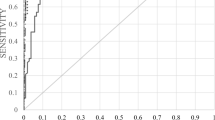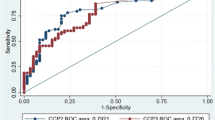Abstract
Anticitrullinated protein/peptide antibodies (ACPA) are highly specific for rheumatoid arthritis (RA). They can be found early in the disease course and are associated with more severe joint destruction and disease activity. In the last 4 years, important progress has been made in the detection and identification of ACPA, improving antigenic composition and epitope recognition. Consequently, many ACPA-ELISA kits have been developed by several manufacturers and are now commercially available. However, albeit their widespread use in clinical laboratories, the use of some kits has not been accompanied by a clinical validation nor by a comparative evaluation of their diagnostic accuracy. In addition, full automation of ACPA assays featuring ease of use, rapid response, and high productivity is just beginning to appear on the market and also deserves clinical and analytical validation. This review will consider the most relevant characteristics of the ACPA-ELISA assays and will describe the results of a comparative study performed with all the currently available second- and third-generation commercial methods.
Similar content being viewed by others
References
Girbal-Neuhauser E, Durieux JJ, Arnaud M et al (1999) The epitopes targeted by the rheumatoid arthritis-associated antifilaggrin autoantibodies are posttranslationally generated on various sites of (pro)filaggrin by deimination of arginine residues. J Immunol 162:585–594
Schellekens GA, de Jong BA, van den Hoogen FH et al (1998) Citrulline is an essential constituent of antigenic determinants recognized by rheumatoid arthritis-specific autoantibodies. J Clin Invest 101:273–281
Cantaert T, De Rycke L, Bongartz T et al (2006) Citrullinated proteins in rheumatoid arthritis. Crucial...but not sufficient! Arthritis Rheum 54:3381–3389
Nienhuis RL, Mandema E (1964) A new serum factor in patients with rheumatoid arthritis: the antiperinuclear factor. Ann Rheum Dis 23:302–305
Hoet RM, van Venrooij WJ (1992) The antiperinuclear factor and antikeratin antibodies in rheumatoid arthritis. In: Smolen JS, Kalden JR, Maini RN (eds) Rheumatoid arthritis. Springer, Berlin, p 299–318
Young BJ, Mallya RK, Leslie RD et al (1979) Antikeratin antibodies in rheumatoid arthritis. Br Med J 2:97–99
Sebbag M, Simon M, Vincent C et al (1995) The antiperinuclear factor and the so-called antikeratin antibodies are the same rheumatoid arthritis-specific autoantibodies. J Clin Invest 95:2672–2679
Nogueira L, Sebbag M, Vincent C et al (2001) Performance of two ELISAs for antifilaggrin autoantibodies, using either affinity purified or deiminated recombinant human filaggrin, in the diagnosis of rheumatoid arthritis. Ann Rheum Dis 60:882–887
Vincent C, Nogueira L, Sebbag M et al (2002) Detection of antibodies to deiminated recombinant rat filaggrin by enzyme-linked immunosorbent assay: a highly effective test for the diagnosis of rheumatoid arthritis. Arthritis Rheum 46:2051–2058
Bizzaro N, Pasini P, Mazzanti G et al (2002) Combined use of the anti-filaggrin and anti-cyclic citrullinated peptide antibody assays for the diagnosis of rheumatoid arthritis. Autoimmunity Rev 1:65
Schellekens GA, Visser H, de Jong BA et al (2000) The diagnostic properties of rheumatoid arthritis antibodies recognizing a cyclic citrullinated peptide. Arthritis Rheum 43:155–163
Bizzaro N, Mazzanti G, Tonutti E et al (2001) Diagnostic accuracy of the anti-citrulline antibody assay for rheumatoid arthritis. Clin Chem 47:1089–1093
van Venrooij WJ, Hazes JM, Visser H (2002) Anticitrullinated protein/peptide antibody and its role in the diagnosis and prognosis of early rheumatoid arthritis. Neth J Med 60:383–388
Suzuki K, Sawada T, Murakami A et al (2003) High diagnostic performance of ELISA detection of antibodies to citrullinated antigens in rheumatoid arthritis. Scand J Rheumatol 32:197–204
Lee DM, Schur PH (2003) Clinical utility of the anti-CCP assay in patients with rheumatic diseases. Ann Rheum Dis 62:870–874
Pinheiro GC, Scheinberg MA, Aparecida da Silva M et al (2003) Anti-cyclic citrullinated peptide antibodies in advanced rheumatoid arthritis. Ann Intern Med 139:234–235
Vasishta A (2002) Diagnosing early-onset rheumatoid arthritis: the role of anti-CCP antibodies. Am Clin Lab 21:34–36
van Gaalen FA, Visser H, Huizinga TW (2005) A comparison of the diagnostic accuracy and prognostic value of the first- and second anti-cyclic citrullinated peptides autoantibody (CCP1 and CCP2) tests for rheumatoid arthritis. Ann Rheum Dis 64:1510–1512
Greiner A, Plischke H, Kellner H et al (2005) Association of anti-cyclic citrullinated peptide antibodies, anti-citrulline antibodies, and IgM and IgA rheumatoid factors with serological parameters of disease activity in rheumatoid arthritis. Ann NY Acad Sci 1050:295–303
Fernandez-Suarez A, Reneses S, Wichmann I et al (2005) Efficacy of three ELISA measurements of anti-cyclic citrullinated peptide antibodies in the early diagnosis of rheumatoid arthritis. Clin Chem Lab Med 43:1234–1239
Dubucquoi S, Solau-Gervais E, Lefranc D et al (2004) Evaluation of anti-citrullinated filaggrin antibodies as hallmarks for the diagnosis of rheumatic diseases. Ann Rheum Dis 63:415–419
Grootenboer-Mignot S, Nicaise-Roland P, Delaunay C et al (2004) Second generation anti-cyclic citrullinated peptide (anti-CCP2) antibodies can replace other antifilaggrin antibodies and improve rheumatoid arthritis diagnosis. Scand J Rheumatol 33:218–220
Kastbom A, Strandberg G, Lindroos A et al (2004) Anti-CCP antibody test predicts the disease course during 3 years in early rheumatoid arthritis (the Swedish TIRA project). Ann Rheum Dis 63:1085–1089
Soderlin MK, Kastbom A, Kautiainen H et al (2004) Antibodies against cyclic citrullinated peptide (CCP) and levels of cartilage oligomeric matrix protein (COMP) in very early arthritis: relation to diagnosis and disease activity. Scand J Rheumatol 33:185–188
Nielen MM, van Schaardenburg D, Reesink HW et al (2004) Specific autoantibodies precede the symptoms of rheumatoid arthritis: a study of serial measurements in blood donors. Arthritis Rheum 50:380–386
Rantapaa-Dahlqvist S, de Jong BA, Berglin E et al (2003) Antibodies against cyclic citrullinated peptide and IgA rheumatoid factor predict the development of rheumatoid arthritis. Arthritis Rheum 48:2741–2749
Forslind K, Ahlmen M, Eberhardt K et al (2004) Prediction of radiological outcome in early rheumatoid arthritis in clinical practice: role of antibodies to citrullinated peptides (anti-CCP). Ann Rheum Dis 63:1090–1095
Vallbracht I, Rieber J, Oppermann M et al (2004) Diagnostic and clinical value of anti-cyclic citrullinated peptide antibodies compared with rheumatoid factor isotypes in rheumatoid arthritis. Ann Rheum Dis 63:1079–1084
Hueber W, Kidd BA, Tomooka BH et al (2005) Antigen microarray profiling of autoantibodies in rheumatoid arthritis. Arthritis Rheum 52:2645–2655
Huizinga TW, Amos CI, van der Helm-van Mil AH et al (2005) Refining the complex rheumatoid arthritis phenotype based on specificity of the HLA–DRB1 shared epitope for antibodies to citrullinated proteins. Arthritis Rheum 52:3433–3438
Van Gaalen FA, van Aken J, Huizinga TWJ et al (2004) Association between HLA class II genes and autoantibodies to cyclic citrullinated peptides (CCPs) influences the severity of rheumatoid arthritis. Arthritis Rheum 50:2113–2121
Hill JA, Sidney J, Sette A et al (2005) DRB1*1501 which does not contain the classic shared epitope sequence can bind citrullinated peptides with high affinity and supports anti-citrullinated peptide antibody (ACPA) production in rheumatoid arthritis patients [abstract]. Arthritis Rheum 52(Suppl 9):S150
Chapuy-Regaud S, Sebbag M, Baeten D et al (2005) Fibrin deimination in synovial tissue is not specific for rheumatoid arthritis but commonly occurs during synovitides. J Immunol 174:5057–5064
Baeten D, Kruithof E, De Rycke L et al (2004) Diagnostic classification of spondylarthropathy and rheumatoid arthritis by synovial histopathology: a prospective study in 154 consecutive patients. Arthritis Rheum 50:2931–2941
Avouac J, Gossec L, Dougados M (2006) Diagnostic and predictive value of anti-cyclic citrullinated protein antibodies in rheumatoid arthritis: a systematic literature review. Ann Rheum Dis 65:845–851
Garcia-Berrocal B, Gonzalez C, Perez M et al (2005) Anti-cyclic citrullinated peptide autoantibodies in IgM rheumatoid factor positive patients. Clin Chim Acta 354:123–130
Tampoia M, Brescia V, Fontana A et al (2005) Anti-cyclic citrullinated peptide autoantibodies measured by an automated enzyme immunoassay: analytical performance and clinical correlations. Chim Clin Acta 355:137–144
Tozzoli R, Bizzaro N, Tonutti E et al (2002) Immunoassay of anti-thyroid autoantibodies: high analytical variability in second generation methods. Clin Chem Lab Med 40:568–572
National Committee for Clinical Laboratory Standards (1999) Evaluation of precision performance of clinical chemistry devices; approved guideline. NCCLS guideline EP5-A. NCCLS, Wayne, PA
Hueber W, Utz PJ, Steinman L et al (2002) Autoantibody profiling for the study and treatment of autoimmune disease. Arthritis Res 4:290–295
Robinson WH, Steinman L, Utz PJ (2002) Proteomics technologies for the study of autoimmune disease. Arthritis Rheum 46:885–893
Hueber W, Utz PJ, Robinson WH (2003) Autoantibodies in early arthritis: advances in diagnosis and prognostication. Clin Exp Rheumatol 21:S59–S64
Author information
Authors and Affiliations
Corresponding author
Rights and permissions
About this article
Cite this article
Bizzaro, N., Tampoia, M. Diagnostic Accuracy of Immunoassays for the Detection of Antibodies to Citrullinated Proteins. Clinic Rev Allerg Immunol 34, 16–20 (2008). https://doi.org/10.1007/s12016-007-8027-0
Published:
Issue Date:
DOI: https://doi.org/10.1007/s12016-007-8027-0




